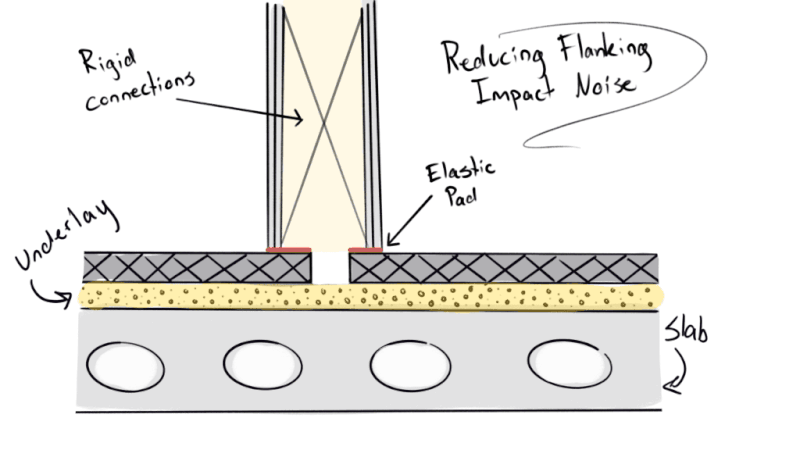Impact Noise And Typical Office Walls
Folding walls are often seen in office buildings.
While a folding wall Can be a great solution for making a flexible room, it does come with some acoustic weaknesses.
One of these weaknesses is the impact noise if wrongly handled.
The Rail that the wall Will fold onto can be separated from the floor on each side in order to reduce unwanted impact flanking noise (from both sides).
The sketch below showcases the principle with a concrete layer floating floor.

Separating the folding wall rail from the screed layer is an important step to reduce unwanted impact noise, creeping its way through the screed layer.
So remember, Impact noise creeps its way through if the structure is not decoupled
While the vertical impact noise may not be a problem, another common issue seen in office buildings is horizontal impact noise, creeping its way through the top screed layer and into adjacent enclosures. This can of course be reduced by separating the screed under the lightweight wall as shown underneath. However another problem arises if the lightweight wall is rigidly connected (example wooden studs), also shown underneath.

Even if the floor is separated underneath the lightweight wall, the impact noise will instead travel through the screed, up and through the rigidly connected lightweight wall panels.
in order to further reduce impact noise, the lightweight wall can be placed on elastic pads to dampen the energy that wants to travel up and through the wall.